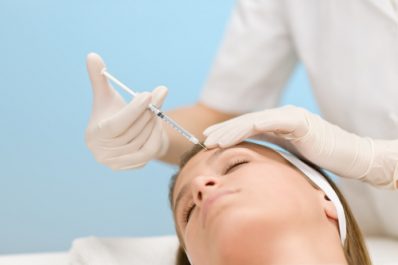How To Determine If You Need Botox Or Fillers
 Botox and injectable fillers are one of the most common non-surgical anti-aging procedures performed today. Men and women love the instant results and non-invasive method of keeping a youthful and refreshed appearance.
Botox and injectable fillers are one of the most common non-surgical anti-aging procedures performed today. Men and women love the instant results and non-invasive method of keeping a youthful and refreshed appearance.
But deciding between the two can be tricky, especially if you are new to receiving Botox and fillers. Here are a few tips to keep in mind when deciding which one is right for you.
When it comes to fine lines Botox is usually recommended for treatment. What constitutes fine lines? The rule of thumb is any lines created during facial expression but go away upon facial relaxation are treated with Botox.
That means forehead lines, the eleven lines between the eyebrows and crows feet around the eyes are all successfully treated with units of Botox.
Botox is a FDA approved botulinum toxin that temporary paralyzes the facial muscles it’s injected into. Once the toxin has caused the muscle to relax, usually about 7 days after it’s injected, the patient will notice fine lines created during facial movement have disappeared.
Some concerns surrounding Botox is the fear of not having the ability to move one’s face or create expression at all. When done by a skilled and certified injector, this should never be an issue.
Patients still have movement of the face, but fine lines are not formed and patients appear to have a more youthful and rejuvenated look, especially when Botox is injected around the eyes to treat crows feet.
Botox usually lasts between three to four months depending on how fast the individual metabolizes the product, and are measured in units. How many units a patient needs in each area of concern depends on the individual and the desired results they are looking to achieve.
Fillers, on the other hand, are used to treat deeper lines that appear even when the facial muscles are resting. Common areas of concern are marionette lines, the lines formed on either side of the mouth, and volume loss in the cheeks and under the eyes.
Fillers are made of a material called hyaluronic acid, a molecule naturally produced by the body. Hyaluronic acids known as Restylane, Juvederm, and Belotero are FDA approved for the treatment of deep lines on the face.
Hyaluronic acid is a soft and moldable product that is thicker than Botox and successfully fills in deep inset lines on the face. It is also great for adding volume to the cheeks and in the tear trough, the area under the eye which looses volume with age.
Fillers are also used in non-surgical nose jobs to help create the appearance of a straighter nose. In certain cases fillers have also been recommended to fill very deep eleven lines between the eyebrows.
In most cases, fillers have been shown to last anywhere between six to 12 months. Many patients notice if they receive touch-ups at the six month mark they require less filler than if they wait the full year to receive another treatment. Fillers are measured in cc’s and come in half or full syringes.
Overall, the most important piece of information is to always schedule a consultation with a licensed and skilled plastic surgeon, facial plastic surgeon, or dermatologist. During the consultation patients can discuss their concerns and goals with the doctor and together decide the best plan of treatment.
















